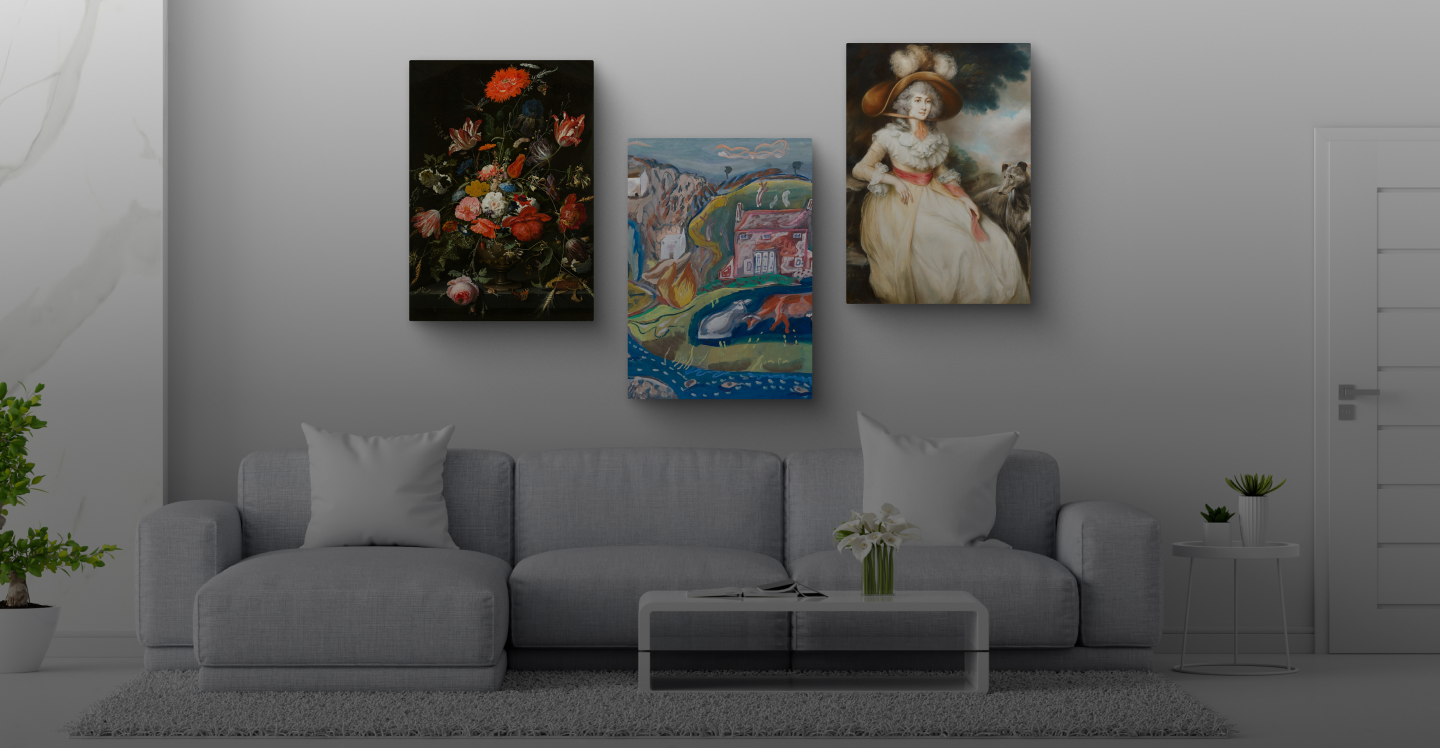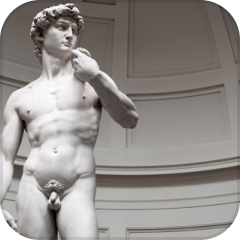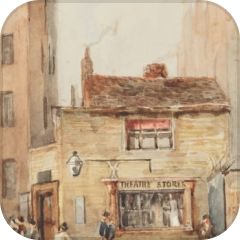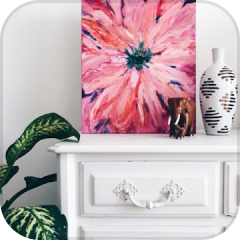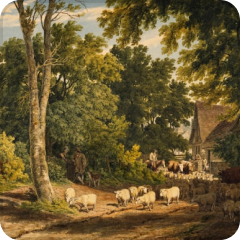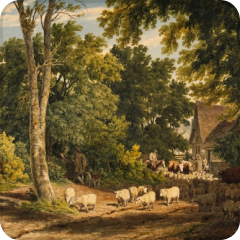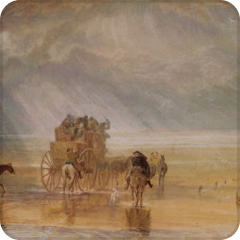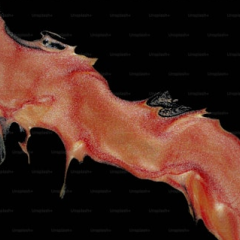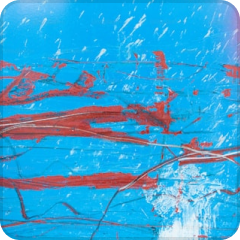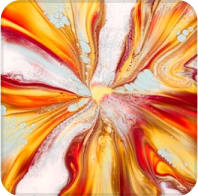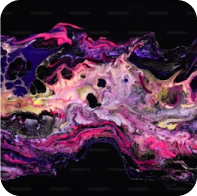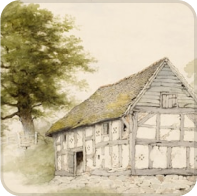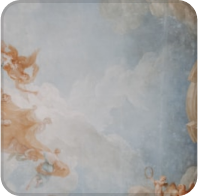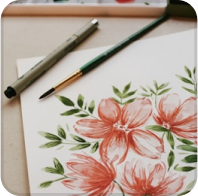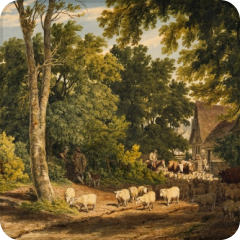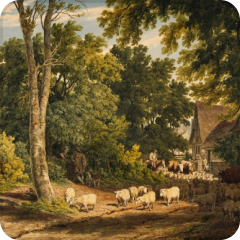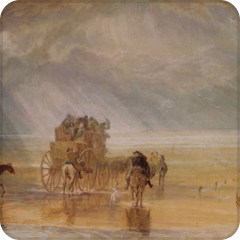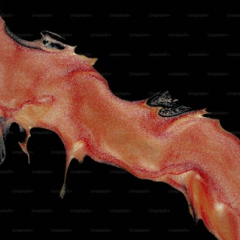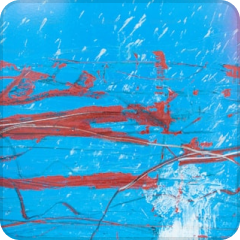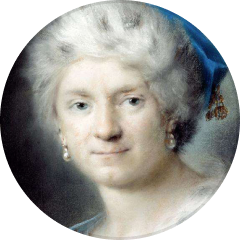





Top Categories
Transform Your Space with Personalized Art Prints
Bring your walls to life with premium, customizable canvas prints. Whether it’s your favorite memories or inspiring art, Zebaco makes it easy to create beautiful, durable pieces that reflect your style.

High-Quality Prints

Affordable Custom Art

100% Satisfaction
What’s On Sale
What Our Customers are Saying


Oliver Stone
"I recently purchased a stunning canvas from Zebaco, and I couldn't be happier with my choice! The vibrant colors and exquisite detail have truly transformed my living room. “


Amelia Rivers
"I recently purchased a stunning canvas from Zebaco, and I couldn't be happier with my choice! The vibrant colors and exquisite detail have truly transformed my living room. “


Ethan Hawke
"I recently purchased a stunning canvas from Zebaco, and I couldn't be happier with my choice! The vibrant colors and exquisite detail have truly transformed my living room. “


Sophia Bennett
"I recently purchased a stunning canvas from Zebaco, and I couldn't be happier with my choice! The vibrant colors and exquisite detail have truly transformed my living room. “


Sophia Bennett
"I recently purchased a stunning canvas from Zebaco, and I couldn't be happier with my choice! The vibrant colors and exquisite detail have truly transformed my living room. “
The Ultimate Guide to Square Photo Prints: Transforming Your Memories into Stunning Wall Art
Square Photo Prints has experienced a remarkable renaissance in contemporary visual culture. The 1:1 aspect ratio, once predominantly associated with vintage Polaroid cameras and early social media platforms, has evolved into a sophisticated artistic choice that captivates both photographers and viewers alike. This symmetrical format possesses an inherent balance that draws the human eye inward, creating a meditative viewing experience that rectangular formats often struggle to achieve.
The psychological impact of square compositions stems from their geometric perfection. Unlike traditional rectangular photographs that may feel rushed or elongated, square images command attention through their equilibrium. This format naturally eliminates peripheral distractions, forcing viewers to focus on the central subject matter with unwavering intensity. When transformed into canvas prints, these square compositions become powerful focal points that can anchor entire room designs.
Professional photographers have discovered that square formats excel in portrait photography, particularly when capturing intimate moments between one to three subjects. The contained nature of the square frame creates an intimate viewing bubble that enhances emotional connections between the artwork and observer. This phenomenon becomes even more pronounced when these images are reproduced as high-quality canvas prints, where the texture and depth of the medium amplify the visual impact.
The versatility of square photo prints compositions extends beyond portraiture into landscape photography, macro work, and abstract imagery. Landscape photographers often find that cropping to a 1:1 ratio eliminates unnecessary sky or foreground elements, concentrating attention on the most compelling aspects of their scenes. Mountain vistas, seascapes, and architectural subjects frequently benefit from this focused approach, creating more impactful compositions that translate beautifully to canvas print formats.
Historical Evolution of Square Photography
The journey of square photography began in the early twentieth century with the introduction of twin-lens reflex cameras that naturally produced square negatives. These cameras revolutionized photography by making the medium more accessible to amateur photographers while establishing the square format as a legitimate artistic choice. The inherent qualities of square compositions were quickly recognized by pioneering photographers who appreciated the format's ability to create balanced, contemplative images.
Medium format cameras continued this tradition, with legendary models producing iconic square photographs that defined generations of visual storytelling. The waist-level viewfinders of these cameras encouraged photographers to compose more thoughtfully, taking time to arrange elements within the square frame carefully. This deliberate approach to composition fostered a deeper understanding of visual balance and harmony that remains relevant in contemporary photography.
The digital revolution initially moved away from square formats, with manufacturers focusing on rectangular sensors that mimicked traditional film ratios. However, the emergence of social media platforms that emphasized square imagery sparked a renewed interest in 1:1 compositions. This cultural shift demonstrated that square photography was not merely a nostalgic throwback but a vital contemporary medium capable of conveying modern sensibilities.
Today's photographers have unprecedented control over aspect ratios, with many cameras offering in-camera cropping options for square formats. This capability allows photographers to visualize their final compositions during capture, eliminating the guesswork associated with post-processing crops. When these carefully composed square images are transformed into canvas prints, they retain the photographer's original vision while gaining the tactile qualities that make canvas such an appealing medium for displaying artwork.
Compositional Advantages of Square Formats
Square compositions offer unique advantages that distinguish them from their rectangular counterparts. The equal dimensions of height and width create a natural balance that allows photographers to experiment with symmetrical and asymmetrical compositions with equal effectiveness. This flexibility proves invaluable when creating images destined for canvas print reproduction, where viewers will have extended opportunities to study the composition's subtleties.
Central placement of subjects, often discouraged in rectangular formats due to the rule of thirds, becomes a powerful tool in square photography. The equidistant borders create a natural frame that supports centrally positioned subjects, drawing viewers' attention inward while maintaining visual interest. This principle proves particularly effective in portrait photography, where centrally placed subjects gain prominence and emotional impact that translates beautifully to large-scale canvas prints.
The square format excels at creating intimate viewing experiences by eliminating the horizontal or vertical dominance found in rectangular images. This balance allows viewers to engage with the entire composition simultaneously rather than scanning from side to side or top to bottom. When reproduced as canvas prints, this quality encourages prolonged viewing and deeper emotional engagement with the artwork.
Negative space utilization becomes more sophisticated in square compositions, where empty areas carry equal visual weight regardless of their position within the frame. Photographers can leverage this quality to create minimalist compositions that emphasize their subjects while maintaining visual interest through thoughtful use of empty space. Canvas prints excel at reproducing these subtle tonal relationships, preserving the delicate balance between positive and negative elements.
Introduction to Square Portrait Photography
Portrait photography has always been about human connection, about capturing not only the physical features of a subject but also their inner essence, emotions, and individuality. Among the many framing techniques available to photographers, square formats stand out as particularly powerful. Unlike the traditional 4:3 or 3:2 rectangular frames, the square format emphasizes balance and symmetry, offering a contained stage where every element feels deliberate. When applied to portraiture, this format strips away distractions, allowing viewers to focus on expressions, emotions, and subtle character details.
The growing popularity of square portraits is no coincidence. With the rise of digital platforms and renewed interest in classic formats, photographers are rediscovering the timeless qualities of square compositions. In canvas printing and wall art, these portraits take on an even greater resonance, transforming from simple photographs into statement pieces that anchor living rooms, offices, and galleries. Their balanced proportions naturally lend themselves to a sense of intimacy, encouraging prolonged engagement from viewers who are drawn into the world of the subject.
Exploring portrait photography in square formats involves not only compositional choices but also psychological insights, technical strategies, and display considerations. When understood and applied thoughtfully, the square becomes more than a format—it becomes a language of intimacy and presence.
The Psychological Power of Square Formats
The psychology of viewing plays a crucial role in portrait photography, as the human brain responds differently to various shapes and dimensions. Rectangular images often guide the eye horizontally or vertically, encouraging movement across the frame. In contrast, square portraits encourage a centered, meditative gaze. The equal dimensions create a sense of stability and completeness, subconsciously reassuring viewers and inviting them to linger.
Studies in visual perception reveal that viewers tend to spend more time analyzing square compositions. With no dominant axis, the eye naturally gravitates toward the center, where subjects are often positioned. This makes square portraits particularly effective in drawing attention to faces, emotions, and small nuances of expression. For artists and photographers, this extended engagement is invaluable, as it deepens the emotional impact of the image.
In residential settings, square portrait canvases often become conversation pieces, capturing the attention of guests who are instinctively drawn to the unusual format. In commercial spaces such as offices, studios, or reception areas, the balanced composition of square portraits conveys professionalism while also projecting warmth and approachability. By tapping into these psychological effects, photographers and interior designers can enhance the communicative power of imagery.
Technical Considerations in Square Portraiture
Creating powerful square portraits requires technical adjustments that differ from standard formats. The first step involves careful composition, as the equal sides demand balance. Photographers often place subjects centrally, reinforcing intimacy and symmetry. However, creative rule-breaking—such as using diagonal lines or off-center positioning—can inject dynamism without disrupting the square’s harmony.
Lens selection plays a critical role. Standard focal lengths between 50mm and 85mm remain ideal for portraiture, offering natural perspectives without distortion. In square formats, these focal lengths emphasize facial features while leaving room for controlled inclusion of background elements. Wide-angle lenses can also be effective, but they require careful control to avoid exaggerated distortions that may overwhelm the contained frame.
Lighting is equally important. Since square portraits encourage extended viewing, lighting must reveal depth and dimension. Soft diffused lighting enhances skin tones and expressions, while dramatic directional lighting emphasizes character and mood. The square frame, with its inherent stability, often complements chiaroscuro or high-contrast lighting setups, producing portraits that feel timeless and painterly.
Modern cameras allow cropping into square formats during editing, but many photographers prefer composing in-camera using viewfinder guides. This ensures that balance and spatial relationships are considered during capture rather than as an afterthought. Whether shot digitally or on medium-format film, which naturally supports square compositions, the technical discipline of working in square frames enhances compositional awareness.
Group Portraits in Square Formats
One of the most compelling applications of square portraiture is in capturing small groups. Traditional rectangular formats can create challenges when arranging multiple subjects, often leaving excessive negative space or forcing cramped alignments. Square compositions, by contrast, offer a contained yet versatile stage where groups of two to four individuals can be arranged naturally.
The symmetry of the square allows for creative groupings where subjects form triangular or diamond-shaped arrangements. Couples, for instance, appear more intimate in square portraits, as the format brings them physically and visually closer together. Families of three or four can be positioned with equal weight across the frame, avoiding the stretched appearance that sometimes occurs in horizontal compositions.
Wedding photographers have increasingly embraced square formats for small group portraits, particularly for intimate family moments or candid interactions between close friends. The resulting images translate beautifully into canvas prints, where the format’s balanced dimensions harmonize with home décor and gallery walls.
Beyond technical convenience, square group portraits foster emotional cohesion. By eliminating empty horizontal or vertical spaces, the frame reinforces the sense of unity between subjects, highlighting their shared bond. This psychological closeness resonates strongly when displayed, turning group portraits into enduring symbols of connection.
Environmental and Contextual Portraits
While square formats excel at isolating faces and groups, they are equally powerful for environmental portraits that integrate meaningful backgrounds. The challenge lies in balancing subject and context within the confined boundaries. Photographers must decide how much of the environment to include while ensuring the subject remains dominant.
The square frame naturally lends itself to equilibrium, making it easier to include architectural lines, landscapes, or symbolic objects without overwhelming the portrait. For example, an artist photographed in their studio benefits from the inclusion of tools and canvases that hint at their creative world. A business leader portrayed in an office setting communicates professionalism through contextual cues.
In canvas reproduction, environmental square portraits achieve sophistication, as the medium’s texture adds depth to both subject and background. Viewers appreciate the dual narrative: the human connection embodied in the portrait and the contextual story revealed by environmental details. This layered approach ensures that portraits resonate on multiple levels, appealing to both personal and aesthetic sensibilities.
Square environmental portraits also integrate seamlessly into offices and homes, where they serve not only as decorative pieces but also as storytelling elements. They bridge the gap between personal expression and contextual meaning, enhancing both the subject’s individuality and their environment’s character.
Square Portraits and Canvas Printing
The relationship between square portrait photography and canvas printing is particularly symbiotic. The square format’s intimacy pairs naturally with the tactile qualities of canvas, where texture amplifies the emotional resonance of facial expressions and human features. Canvas prints eliminate reflective glass, allowing viewers to engage directly with the image, enhancing its presence in a room.
Square canvases have become especially popular in modern interior design due to their versatility. They can be displayed individually as bold statement pieces or arranged in grids for gallery-style presentations. A series of square portrait canvases, each capturing different emotions or stages of life, creates powerful narrative walls that feel curated and personal.
The frameless nature of gallery-wrapped canvases further complements square portraits. With imagery extending around the edges, the contained format feels both complete and expansive, adding to its visual impact. Whether displayed in minimalist environments or traditional interiors, square portrait canvases adapt effortlessly, bridging classic artistry with contemporary style.
Professional portrait photographers often recommend canvas as the ideal medium for square compositions because the format’s strengths—balance, intimacy, and focus—are enhanced by the medium’s tactile qualities. Together, they produce artworks that transcend photography, entering the realm of fine art.
Introduction to Square Landscape Photography
Landscape photography has traditionally been associated with wide horizons, panoramic views, and rectangular compositions that mimic the expansiveness of natural scenery. However, square formatting challenges this convention, offering photographers an alternative approach that distills scenes into their most essential components. Instead of overwhelming viewers with breadth, the square format invites focus, intimacy, and balance. It reframes the way landscapes are experienced, turning vast spaces into contained, powerful expressions that emphasize composition over scale.
In the context of canvas printing, square landscapes acquire additional resonance. The tactile surface of canvas enriches textures, enhances tonal subtleties, and provides a painterly quality that amplifies the format’s strengths. The square’s inherent symmetry and stability encourage prolonged engagement, transforming photographs into statement pieces that suit both modern and traditional interiors. By considering square compositions in mountain photography, seascapes, woodlands, and golden hour imagery, photographers can expand their creative vocabulary while producing prints that captivate in ways rectangular formats sometimes cannot.
The Compositional Strength of Square Formats
The greatest strength of square landscape photography lies in its ability to simplify. Panoramic images often require the inclusion of vast stretches of sky, ground, or water, which can dilute compositional impact. By contrast, square cropping forces intentionality. Every element within the frame must contribute meaningfully, as there is no room for excess. This discipline encourages photographers to refine their vision, isolating focal points and creating compositions that feel deliberate and concise.
The square frame also influences visual flow. Without a dominant horizontal or vertical axis, the viewer’s eye tends to settle in the center, moving outward evenly. This balanced gaze reduces distraction and emphasizes the main subject, whether a mountain peak, a crashing wave, or a cluster of trees. By focusing attention, square landscapes foster intimacy and encourage closer examination.
For canvas prints, this compositional focus translates into striking presence. A square image occupies wall space differently from a panoramic rectangle, offering visual weight without requiring excessive width. This makes square landscapes versatile for a range of interiors, from compact apartments to expansive galleries. Whether displayed individually or as part of a grid, square prints feel modern, intentional, and impactful.
Mountains and Monumental Landscapes
Mountain photography demonstrates how square formatting can transform perceptions of grandeur. Traditional wide-angle compositions often emphasize scale by including vast skies or sprawling valleys. While impressive, these approaches sometimes diffuse attention, reducing the immediacy of the mountains themselves. Square cropping eliminates unnecessary expanses, concentrating visual power on the mass, form, and texture of the peaks.
A snow-covered summit framed in a square composition appears monumental, almost sculptural. By trimming excess sky or ground, the photograph conveys intimacy with the mountain, as though the viewer is standing closer. This approach also highlights geological details—rock strata, snow drifts, or jagged ridges—that might otherwise be lost in broader panoramas.
Canvas reproduction enhances these qualities further. The textured surface of canvas mirrors the ruggedness of mountain terrain, adding dimensionality that engages both eye and imagination. Large square prints of mountains make ideal focal pieces for living rooms or offices, projecting strength, stability, and timelessness.
Additionally, square mountain photography allows experimentation with symmetry. Reflections in alpine lakes, for example, achieve striking balance when composed within equal dimensions. The result is a harmonious, meditative image that resonates emotionally as well as aesthetically.
Seascapes and Coastal Photography
Seascape photography adapts remarkably well to square compositions. Oceans, with their rhythmic waves, textured surfaces, and dramatic coastlines, provide natural subjects that thrive within contained boundaries. Instead of vast stretches of horizon, square seascapes concentrate on focal points such as breaking waves, rugged rock formations, or tide pools that shimmer with reflected light.
The square format’s containment helps eliminate distracting elements such as excessive sky or empty expanses of water. This focus allows photographers to emphasize patterns, contrasts, and textures that define marine environments. For example, the interplay between crashing surf and jagged cliffs becomes more pronounced when unnecessary space is cropped away.
On canvas, seascapes gain tactile resonance. The natural weave of the material echoes the textures of water, sand, and stone, creating immersive prints that feel almost tangible. A square seascape hung in a living room or hallway does not merely depict the ocean; it evokes its rhythm and energy, transforming interiors with a sense of movement and vitality.
Coastal sunsets also benefit from square cropping, as the format condenses color gradations into balanced compositions. The symmetry between sky and water becomes more striking, creating imagery that radiates calm and sophistication. These canvases serve as versatile décor, complementing both minimalist and eclectic interiors with their timeless appeal.
Forests and Woodland Imagery
Forest and woodland photography presents unique compositional challenges, as vertical tree trunks and dense foliage often create overwhelming or claustrophobic scenes in rectangular formats. Square compositions address this issue by balancing verticality with stability, preventing the dominance of elongated proportions. The result is imagery that feels intimate rather than oppressive.
In square woodland portraits, tree trunks frame the central subject while allowing glimpses of canopy and ground that provide environmental context. This format captures the essence of forest environments—the interplay of light filtering through leaves, the texture of bark, and the rhythm of repeating forms—without overwhelming viewers.
Square cropping also encourages creative arrangements. A single tree framed against surrounding foliage becomes a central figure, while clusters of trunks form geometric patterns that resonate with the frame’s symmetry. Seasonal variations—autumn leaves, winter snow, spring blossoms—gain additional charm when presented in contained compositions.
On canvas, woodland imagery acquires atmospheric depth. The medium’s texture enhances the organic qualities of forests, enriching tones of green, brown, and gold. Square forest prints displayed in homes or offices evoke tranquility and natural connection, offering viewers a daily reminder of nature’s restorative power.
Sunrises, Sunsets, and Golden Hour Light
Sunrise and sunset photography remains one of the most beloved subjects in landscape art, prized for its luminous colors and emotional resonance. While rectangular formats often emphasize wide horizons, square cropping distills the moment to its essence, preserving the glow of golden hour without diluting it with unnecessary sky or land.
By focusing on the sun’s position, the gradient of light, and surrounding silhouettes, square compositions create balanced images that feel timeless and poetic. The contained frame eliminates visual clutter, allowing the vibrancy of colors—pinks, oranges, purples, and golds—to dominate the composition.
Canvas printing enhances these qualities by reproducing subtle gradations with richness and depth. The interplay between warm light and textured surfaces produces prints that radiate atmosphere, inviting viewers to relive the serenity of dawn or dusk. These square golden hour canvases suit a variety of interiors, from modern lofts to traditional homes, where they serve as calming focal points.
Beyond aesthetics, square golden hour photography conveys symbolic meaning. Sunrises suggest renewal and hope, while sunsets evoke reflection and closure. When reproduced as canvas prints, these images transcend decoration, becoming visual metaphors that enrich personal and communal spaces.
Display and Interior Integration
Square landscapes offer unique advantages for interior design, adapting effortlessly to both small and large spaces. Their balanced proportions make them versatile for arrangements that rectangular prints sometimes complicate. A single oversized square print can anchor a wall with authority, while multiple smaller squares can be arranged into grids or series for gallery-style displays.
Above sofas or beds, square canvases create symmetry that harmonizes with surrounding furniture. In hallways or staircases, grids of smaller squares generate rhythm and continuity, transforming transitional spaces into curated galleries. Offices and commercial interiors also benefit from square landscapes, as they project professionalism while offering visual calm.
Series presentations prove especially effective. Related square images—mountains, forests, seascapes, or sunsets—displayed in consistent sizes reinforce thematic unity. Variation in scale within grouped displays adds energy, creating focal points while maintaining coherence.
Because square landscapes occupy visual weight without excessive width, they suit compact urban interiors as well as expansive rural homes. Their adaptability ensures that they remain timeless additions to diverse environments, capable of elevating both modern and traditional spaces.
Macro Photography and Square Compositions
Macro photography discovers natural harmony within square formats, where the intimate scale of close-up subjects aligns perfectly with the contained nature of 1:1 compositions. Flower photography, in particular, benefits from square cropping that eliminates distracting background elements while emphasizing the geometric patterns and color relationships that make botanical subjects captivating.
Insect photography gains impact through square compositions that provide sufficient space around subjects to prevent cramped appearances while maintaining intimate scales that reveal fascinating details. The balanced proportions of square formats complement the often symmetrical nature of insect subjects, creating harmonious compositions that reproduce beautifully as canvas prints.
Texture studies and abstract macro work find natural expression in square formats where the equal dimensions prevent any single element from dominating the composition. Whether photographing bark patterns, water surfaces, or architectural details, square cropping allows photographers to create balanced abstract compositions that engage viewers through their formal qualities rather than recognizable subject matter.
The reproduction of macro photography on canvas adds dimensional qualities that enhance the tactile nature of close-up subjects. Canvas texture complements the detailed surfaces often featured in macro work, creating prints that invite both visual and tactile engagement. Square formats ensure that these detailed compositions maintain their impact when displayed at various sizes.
Social Media Influence on Square Photography
The resurgence of square photography owes much to social media platforms that adopted 1:1 aspect ratios as their standard format. This cultural shift reintroduced millions of photographers to the aesthetic possibilities of square compositions, sparking renewed interest in this format across all levels of photographic practice.
Professional photographers initially resisted the square format's association with casual social media imagery, but gradually recognized its legitimate artistic potential. The challenge of creating compelling square compositions within the constraints of social media led to innovations in composition, color theory, and visual storytelling that enhanced photography as an art form.
The democratization of square photography through social media has created a generation of photographers who think naturally in 1:1 compositions. These practitioners bring fresh perspectives to traditional photographic subjects, approaching portraits, landscapes, and still life imagery with compositional strategies that prioritize balance and intimacy over traditional rectangular dynamics.
This cultural familiarity with square formats has increased demand for square canvas prints as consumers seek to display their favorite digital images in physical form. Print services have responded by offering square canvas options in various sizes, recognizing that contemporary photographers create compelling square compositions worthy of traditional display methods.
Introduction to Canvas Printing
Canvas printing has emerged as one of the most refined and enduring methods of photographic reproduction. Unlike paper prints, which often suffer from glare, fragility, and flatness, canvas prints provide dimensional presence, textured depth, and tactile qualities that elevate imagery into works of art. By combining durability with artistry, canvas printing transforms digital or film-based photographs into long-lasting décor suitable for homes, offices, and galleries.
The medium offers more than just longevity. Canvas allows images to breathe, reducing reflective distractions and creating immersive visual experiences that invite extended engagement. The texture of the woven fabric interacts with ink in ways that soften harsh edges while enriching tonal gradations, lending a painterly quality that aligns photography with fine art traditions. For individuals seeking permanence, style, and sophistication, canvas printing remains a premier choice.
The fundamentals of canvas printing include material selection, printing processes, finishing options, and display considerations. Each step plays a crucial role in determining the aesthetic and archival quality of the final piece. By mastering these aspects, both professionals and enthusiasts can ensure their images are reproduced with fidelity, elegance, and durability.
Canvas Materials and Their Characteristics
The foundation of every print lies in the canvas itself, and the choice of material significantly influences appearance, longevity, and resilience. Premium cotton canvases are highly prized for their archival qualities. The natural fibers provide superior ink absorption, resulting in rich tonal reproduction, subtle gradations, and authentic textures that closely resemble traditional paintings. Cotton canvases also offer excellent longevity, making them ideal for heirloom-quality prints intended to last generations.
Polyester canvases, by contrast, emphasize durability and resistance. Their synthetic fibers maintain tighter tension over time, reducing the risk of sagging or distortion, especially in larger prints. They are less vulnerable to environmental fluctuations in humidity and temperature, making them practical choices for commercial installations or areas with variable conditions.
Blended canvases that combine cotton and polyester attempt to balance the strengths of both. They provide the visual richness of cotton while offering the durability and stability of polyester. These hybrids have become increasingly popular as they combine archival aesthetics with modern practicality.
Surface finish further defines character. Matte finishes reduce glare, emphasizing subtlety and minimizing reflection under strong lighting. Semi-gloss or satin finishes intensify saturation and vibrancy, making colors appear more vivid while still avoiding the harsh glare of glossy photo paper. Choosing between these finishes depends on both the intended environment and the emotional effect desired.
Printing Technologies and Ink Systems
Modern canvas printing relies on advanced inkjet systems capable of producing gallery-quality results. These printers employ micro-precision nozzles that deposit ink onto the textured surface with remarkable accuracy, ensuring faithful reproduction of details and tonal gradations.
The choice of ink plays a critical role. Pigment-based inks are preferred for professional canvas printing due to their archival properties. Unlike dye-based inks, which are prone to fading over time, pigments resist ultraviolet light and environmental stressors, maintaining vibrancy for decades when properly displayed. This makes pigment printing the standard for galleries, museums, and serious collectors.
Color management systems ensure fidelity between digital files and printed canvases. Calibrated monitors, standardized color profiles, and careful adjustments during the workflow prevent unexpected shifts in tone or saturation. This meticulous process guarantees that the printed canvas reflects the original artistic intent.
Resolution is another essential factor. High-resolution files, ideally exceeding 300 DPI at print size, preserve fine details and avoid pixelation. Professional printers can handle these requirements with ease, ensuring that even large-format canvases retain sharpness and clarity.
Through the integration of advanced printing technology and archival inks, canvas reproductions achieve a level of quality once reserved for fine art lithographs and hand-painted works.
Mounting and Stretching Techniques
Once printed, a canvas must be properly mounted to achieve both aesthetic and structural integrity. Stretching involves securing the fabric onto stretcher bars to create a taut, flat surface. Proper stretching eliminates wrinkles, prevents sagging, and enhances the dimensional quality that distinguishes canvas prints from paper-based alternatives.
High-quality stretcher bars, typically crafted from kiln-dried hardwood, resist warping and maintain stability across years of display. Adjustable stretcher bars allow re-tensioning if minor slack develops, extending the lifespan of the print. Larger canvases often incorporate cross-bracing to provide additional support and prevent bowing.
The technique of gallery wrapping has become particularly popular. In this method, the image extends around the sides of the stretcher bars, creating a frameless effect that emphasizes modern minimalism. Gallery wraps allow artwork to appear complete from all angles, making them ideal for contemporary interiors and open display spaces.
Traditional wraps, in which the edges remain neutral or folded, maintain focus on the front-facing image and are well-suited for portraits, detailed photography, or classical presentation styles. These prints can be paired with frames for added refinement and protection.
Proper mounting not only enhances aesthetics but also safeguards longevity. A well-stretched canvas feels resilient, ensuring that the print remains visually striking and structurally sound for decades.
Framing and Presentation Options
While gallery-wrapped canvases often require no additional framing, many collectors and designers choose frames to enhance elegance, protection, and integration into interior environments. The most popular choice is the floater frame, which surrounds the stretched canvas without touching its surface. This design creates the illusion that the canvas is floating within the frame, emphasizing its dimensionality while providing a subtle boundary.
Frame materials and finishes contribute significantly to the overall aesthetic. Wooden frames add warmth and organic character, harmonizing with rustic or traditional interiors. Metal frames, with their sleek lines and polished finishes, suit contemporary or minimalist environments. Neutral colors emphasize subtlety, while bold finishes create striking contrasts.
Framing also offers protective benefits. By shielding the canvas edges, frames reduce wear and safeguard against accidental damage. For canvases displayed in high-traffic areas, frames ensure that prints remain pristine while also providing additional structural stability.
Presentation choices ultimately depend on personal preference, artistic style, and intended environment. Whether unframed, gallery-wrapped, or displayed in elegant frames, each method highlights different aspects of the canvas while ensuring that prints remain versatile décor solutions.
Preservation and Longevity of Canvas Prints
One of the greatest advantages of canvas printing is its durability. When produced with archival materials and displayed under proper conditions, canvas prints can maintain their vibrancy for decades. Pigment-based inks, UV-resistant coatings, and high-quality canvases all contribute to longevity, ensuring that prints resist fading and environmental wear.
Proper placement is crucial. Avoiding direct sunlight, high humidity, and fluctuating temperatures prevents deterioration. Displaying prints in climate-controlled environments prolongs both structural and visual integrity. In residential settings, this often means choosing shaded walls or rooms with consistent conditions.
Maintenance requires minimal effort. Dusting with soft, dry cloths prevents buildup, while harsh cleaners or water exposure should be avoided. For prints exposed to higher risks, protective sprays can add resistance against moisture and minor abrasions.
The stretching and mounting system should also be monitored over time. Inspecting stretcher bars for warping and re-tensioning when necessary ensures that prints remain taut. With care, canvas prints endure as heirlooms, preserving both personal and artistic legacies.
Canvas Prints in Interior Design
Beyond technical considerations, canvas printing plays a significant role in interior design. The medium’s textured surface and frameless options provide versatility, allowing prints to complement diverse décor styles. A large canvas can serve as a bold centerpiece, anchoring a living room or office wall, while smaller prints arranged in grids or series create curated galleries.
Square canvases, panoramic formats, or multi-panel arrangements allow creative expression tailored to specific environments. Portraits, landscapes, abstract designs, and even text-based artwork gain presence when reproduced on canvas. Their lack of reflective glare ensures visibility under varied lighting conditions, enhancing their adaptability across homes, workplaces, and public spaces.
In commercial interiors, canvas prints communicate identity and atmosphere. Offices benefit from motivational imagery or branded visuals, while restaurants and hotels use canvases to establish ambiance. In personal homes, canvases preserve memories—weddings, travel, family milestones—while contributing to the aesthetics of daily living.
The integration of canvas into interior design demonstrates its dual function as both art and décor, making it an indispensable medium for anyone seeking lasting visual impact.
Introduction to Color Theory in Square Canvas Prints
Color plays a central role in the success of any artwork or photograph, but its influence becomes particularly striking in square canvas prints. Unlike rectangular compositions, which often guide the eye horizontally or vertically, the square format provides complete neutrality. This absence of directional bias means no single axis dominates, giving photographers and artists equal freedom to experiment with warm, cool, or neutral palettes. Square prints therefore become exceptional arenas for exploring color harmonies, contrasts, and psychological associations in ways that other formats may limit.
The balanced proportions of the square frame encourage prolonged viewing. When placed on canvas, colors interact with textured surfaces that add depth, vibrancy, and tactility, reinforcing emotional responses. Square formats allow color choices to breathe, enabling symmetrical or evenly distributed palettes that feel deliberate rather than coincidental. From monochromatic studies to bold complementary pairings, the square frame becomes a versatile tool for applying color theory principles with sophistication and clarity.
Understanding how to integrate color theory within square canvas prints allows photographers, painters, and designers to create works that resonate emotionally, engage visually, and enhance interior environments with intention and artistry.
Monochromatic Approaches in Square Formats
Monochromatic schemes find their natural home within square compositions. By focusing on variations of a single hue, artists strip away complexity, encouraging viewers to appreciate tonal gradations, subtle textures, and compositional strength. The neutrality of the square frame prevents monotony, allowing the eye to explore without distraction.
Black and white square prints epitomize this approach. When printed on canvas, the interplay of light and shadow gains enhanced tactility. Canvas texture amplifies midtone transitions, giving monochrome images depth and richness that digital displays or glossy paper cannot replicate. Such prints radiate sophistication, making them timeless additions to residential and professional interiors alike.
Beyond grayscale, monochromatic schemes using color families such as blues, reds, or greens achieve similar refinement. A square seascape rendered in varied blues, for instance, evokes tranquility while benefiting from compositional stability. Canvas printing highlights these tonal variations through texture, transforming subtle shifts into engaging focal points.
Monochromatic square prints excel in minimalist environments, where simplicity becomes strength. They encourage calm contemplation while maintaining enough visual interest to serve as dynamic décor. Their enduring appeal lies in their ability to celebrate nuance over spectacle.
Complementary Color Relationships
Complementary colors, positioned opposite each other on the color wheel, create visual tension and energy when paired together. In rectangular formats, this contrast can sometimes feel unbalanced, with one color dominating due to directional emphasis. Square compositions resolve this challenge by offering equal spatial weight in all directions, allowing complementary colors to coexist harmoniously.
For example, a square canvas featuring orange sunsets against deep blue skies creates balance without overwhelming either tone. The square frame stabilizes the intensity, letting viewers appreciate the vibrancy of each color in equal measure. Similarly, portraits incorporating red and green tones benefit from this equilibrium, appearing dynamic yet cohesive.
Canvas printing enhances complementary schemes by adding physical depth. Texture softens transitions between contrasting hues, making interactions feel layered rather than harsh. This tactile quality allows complementary relationships to remain bold without causing visual strain.
Complementary schemes work especially well in statement pieces. Large square canvases above mantels or in entryways can harness these powerful color pairings to energize spaces, creating both artistic intrigue and emotional resonance.
Analogous Harmony in Square Compositions
Analogous color schemes, composed of hues adjacent on the color wheel, embody harmony and unity. Their subtle transitions and natural flow make them particularly effective in square formats, where balanced proportions reinforce the sense of cohesion.
Consider a square woodland scene rendered in greens, yellows, and soft browns. The analogous palette mirrors the natural environment, while the square frame contains and organizes the hues into a structured composition. The result feels organic yet intentional. Similarly, seascapes using blues, teals, and violets achieve calm elegance, ideal for creating tranquil atmospheres in bedrooms or meditation spaces.
Canvas reproduction enhances analogous schemes by deepening tonal subtleties. The fabric surface reveals delicate shifts between similar hues, enriching the viewing experience. These subtle variations often become more apparent in canvas prints than in glossy photographs, as the texture draws attention to transitions that might otherwise go unnoticed.
Analogous square prints suit spaces requiring harmony and balance. They establish soothing environments while maintaining enough depth to remain visually engaging. Their understated beauty demonstrates how restrained color use, combined with format neutrality, can produce profound emotional impact.
Practical Applications in Interior Environments
Applying color theory in square canvas prints extends beyond artistic experimentation; it directly impacts interior design. The format’s symmetry makes it highly versatile for diverse spaces, allowing colors to guide ambiance with precision.
In minimalist interiors, monochromatic square prints provide elegance without clutter, using controlled palettes to reinforce simplicity. Complementary square prints introduce vibrancy, acting as bold focal points that energize neutral rooms. Analogous prints, meanwhile, suit bedrooms, spas, or lounges where relaxation and continuity are desired.
Square canvases also excel in modular displays. A grid of smaller prints can explore variations within a single palette, creating rhythm and cohesion. For example, a four-panel series might present seasonal shifts through analogous transitions, forming a narrative while maintaining color harmony.
In commercial settings, square color-based prints communicate identity and atmosphere. Restaurants may use warm complementary schemes to stimulate appetite and energy, while healthcare environments benefit from cool analogous schemes that project calmness and trust. Offices often integrate monochromatic or neutral palettes to establish professionalism and focus.
The adaptability of square canvas prints ensures that color theory principles can be applied strategically, shaping both aesthetic character and emotional experience within spaces.
Sizing Considerations for Square Canvas Prints
Determining appropriate sizes for square canvas prints requires understanding how the format's proportions affect visual impact at different scales. Small square prints, typically ranging from 8x8 to 12x12 inches, work well in intimate settings where viewers can study details closely. These sizes suit personal spaces like bedrooms, offices, or reading nooks where the contemplative qualities of square compositions enhance the environment.
Medium-sized square canvas prints, ranging from 16x16 to 24x24 inches, provide versatility for most residential and commercial applications. These dimensions offer sufficient visual impact to anchor wall arrangements while remaining manageable for typical room scales. The balanced proportions of square formats prevent medium-sized prints from overwhelming smaller spaces while ensuring adequate presence in larger rooms.
Large square canvas prints, exceeding 30x30 inches, create dramatic focal points that can transform entire rooms. These oversized pieces work best with high-resolution source images and carefully considered placement where viewers can appreciate both overall impact and fine details. The square format's natural balance prevents large prints from appearing overwhelming while ensuring maximum visual impact.
Gallery walls and multi-panel arrangements benefit from consistent square formats that create unified visual rhythms. Series of square canvas prints can be arranged in various configurations that emphasize their geometric harmony while providing flexibility for different wall dimensions and viewing distances.
Framing and Display Options
Square canvas prints offer unique display opportunities that distinguish them from rectangular artwork. The inherent balance of square compositions allows for creative hanging arrangements that might appear chaotic with rectangular pieces. Single square prints can serve as powerful focal points, while multiple squares create rhythmic patterns that enhance architectural features.
Frameless mounting emphasizes the contemporary nature of canvas prints while highlighting their dimensional qualities. Gallery wrapping allows square images to extend around canvas edges, creating three-dimensional artwork that casts subtle shadows and changes appearance with viewing angle variations. This mounting method works particularly well with square formats that benefit from the additional visual weight provided by wrapped edges.
Traditional framing remains an option for square canvas prints, particularly when matching existing décor or creating more formal presentations. Floating frames provide protection while maintaining the dimensional qualities that distinguish canvas from paper prints. The choice between thin, contemporary frames and substantial traditional options affects the overall aesthetic impact of square compositions.
Lighting considerations become crucial when displaying square canvas prints, as their balanced compositions benefit from even illumination that reveals texture details without creating harsh shadows. Track lighting, picture lights, and carefully positioned ambient lighting all contribute to optimal viewing conditions that enhance the canvas medium's natural qualities.
Interior Design Integration
Square canvas prints integrate seamlessly into contemporary interior design schemes that emphasize balance, symmetry, and geometric harmony. The format's neutral proportions complement both traditional and modern architectural elements while providing flexibility for diverse decorating approaches. Unlike rectangular artwork that may conflict with room proportions, square pieces adapt to various spatial configurations.
Color coordination between square canvas prints and interior elements requires consideration of the format's neutral visual weight. Square compositions neither emphasize horizontal nor vertical elements, allowing interior designers to use them as balancing elements that harmonize with furniture arrangements and architectural features. This versatility makes square canvas prints valuable tools for creating cohesive interior environments.
Scale relationships between square artwork and furniture require careful consideration to maintain visual balance. Square prints work well above square or circular furniture pieces, where the geometric harmony creates pleasing compositional relationships. The balanced nature of square formats prevents conflicts with furniture proportions that sometimes occur with rectangular artwork.
Grouping strategies for square canvas prints offer creative possibilities that emphasize geometric relationships while providing flexibility for changing arrangements. Grid patterns, asymmetrical clusters, and linear arrangements all work effectively with square formats, allowing interior designers to create custom solutions that enhance specific spatial requirements.
Commercial Applications
Commercial environments benefit from square canvas prints in ways that distinguish them from traditional rectangular artwork. Office spaces, restaurants, hotels, and retail establishments use square compositions to create sophisticated atmospheres that enhance their professional image while providing visual interest that engages visitors without distraction.
Corporate art programs increasingly specify square formats for their neutral visual impact that complements diverse architectural styles without overwhelming workspace functionality. Square canvas prints provide sufficient visual presence to enhance professional environments while maintaining the balanced aesthetic that supports productivity and concentration.
Hospitality industry applications leverage the intimate viewing experience created by square compositions to enhance guest comfort and satisfaction. Hotel rooms, restaurant dining areas, and lobby spaces benefit from square artwork that creates welcoming atmospheres without competing with functional requirements or architectural elements.
Retail environments use square canvas prints to create branded atmospheres that reflect company values while providing visual interest that enhances the shopping experience. The balanced nature of square compositions prevents artwork from overwhelming merchandise displays while contributing to overall environmental aesthetics.
Healthcare facilities discover that square compositions create calming environments that support patient comfort and staff wellbeing. The balanced, contemplative qualities of square formats complement healthcare environments where visual harmony contributes to healing and recovery processes.
Quality Considerations
Print quality assessment for square canvas prints requires understanding how the format's balanced proportions affect visual perception of technical defects. Resolution requirements remain consistent with rectangular formats, but the concentrated viewing encouraged by square compositions makes technical flaws more noticeable. High-resolution source files become essential for producing square canvas prints that withstand close examination.
Color accuracy takes on increased importance in square formats where viewers spend more time studying color relationships and tonal variations. Professional color management throughout the printing process ensures that square canvas prints accurately represent the photographer's original artistic vision while maintaining consistency across multiple print runs.
Canvas material selection affects both appearance and longevity of square prints. Premium cotton canvases provide superior archival stability and texture characteristics that enhance the viewing experience, while synthetic alternatives offer increased durability for high-traffic commercial environments. The choice between material options should consider both aesthetic preferences and practical requirements.
Finishing quality becomes particularly important for square canvas prints that serve as focal points in interior spaces. Gallery wrapping techniques, mounting precision, and protective coatings all contribute to professional appearance and long-term durability that justify the investment in high-quality canvas reproduction.
Environmental Factors
Environmental conditions significantly affect the longevity and appearance of square canvas prints. Humidity control prevents canvas expansion and contraction that can affect image registration and mounting integrity. Temperature stability maintains color accuracy while preventing dimensional changes that might compromise print quality over time.
Light exposure management becomes crucial for preserving square canvas prints, particularly when they serve as focal points that receive concentrated viewing. UV-filtering glazing, controlled artificial lighting, and strategic placement away from direct sunlight all contribute to long-term color stability and material preservation.
Air quality considerations include protection from dust, pollutants, and atmospheric moisture that can affect canvas appearance and longevity. HVAC filtration, regular cleaning schedules, and protective barriers help maintain optimal viewing conditions while preserving investment value in high-quality square canvas prints.
Handling procedures for square canvas prints require understanding how the format's proportions affect structural integrity. Proper support techniques prevent corner damage while specialized cleaning methods preserve both image quality and canvas texture characteristics that distinguish this medium from alternative reproduction methods.
Artistic Movements and Square Formats
Contemporary art movements have embraced square formats as vehicles for exploring geometric relationships, minimalist aesthetics, and conceptual frameworks that challenge traditional rectangular dominance in visual arts. Abstract expressionism, geometric abstraction, and conceptual art have all found expression through square compositions that emphasize formal relationships over representational content.
Minimalist photography discovers natural harmony within square boundaries that eliminate unnecessary elements while emphasizing essential formal qualities. The contained nature of square compositions supports minimalist philosophy by forcing photographers to distill their vision to fundamental elements that communicate clearly without extraneous details.
Street photography adapts square formats to create more intimate urban narratives that focus on human interactions rather than architectural contexts. The balanced proportions of square compositions allow street photographers to emphasize emotional moments while eliminating distracting environmental elements that might compromise narrative clarity.
Documentary photography benefits from square formats that create more focused storytelling opportunities. By eliminating peripheral information that might dilute narrative impact, square compositions allow documentary photographers to create more concentrated visual stories that engage viewers emotionally while conveying essential information effectively.
Fine art photography increasingly embraces square formats as legitimate artistic choices that offer unique expressive possibilities. Gallery exhibitions frequently feature square photographic works that demonstrate the format's capacity for creating compelling artwork worthy of serious critical attention and commercial success.
Cultural Impact and Trends
Global cultural trends reflect increasing acceptance and appreciation for square photography formats across diverse photographic communities. Professional photographers report growing client demand for square compositions, particularly in portrait and lifestyle photography where the format's intimate qualities enhance emotional connections.
Generational differences in format preferences reveal interesting patterns, with younger photographers showing greater comfort with square compositions due to social media exposure, while older practitioners often discover renewed creative inspiration through exploring 1:1 aspect ratios that challenge traditional compositional approaches.
Cross-cultural analysis of square format preferences reveals universal appreciation for balanced compositions that transcend cultural boundaries. The mathematical perfection of square proportions appeals to diverse aesthetic sensibilities while providing common ground for international photographic communication.
Fashion photography increasingly utilizes square formats for editorial and commercial work that emphasizes clothing details and model expressions over environmental contexts. The intimate viewing experience created by square compositions enhances fashion photography's goal of creating emotional connections between viewers and products.
Wedding photography trends show significant movement toward square formats that create more intimate documentation of ceremonies and celebrations. The balanced nature of square compositions supports the romantic, timeless aesthetic that couples desire while providing practical advantages for album design and wall display.
Future Developments
Emerging display methods promise to enhance the impact of square canvas prints through innovative mounting systems, interactive elements, and smart home integration that responds to changing lighting conditions and viewing preferences. These developments will maintain the essential appeal of canvas texture while adding contemporary functionality.
Printing technology advances continue to improve color accuracy, longevity, and texture characteristics of canvas reproduction methods. New ink formulations, canvas materials, and finishing processes will enhance the already impressive capabilities of current square canvas printing while reducing costs and environmental impact.
Digital integration possibilities include QR codes or NFC tags embedded in canvas mounts that provide additional information about images, photographers, or artistic concepts without compromising the aesthetic appeal of square compositions. These features could enhance commercial and educational applications while maintaining artistic integrity.
Market trends indicate continued growth in demand for square canvas prints as interior designers, commercial clients, and residential customers recognize the unique advantages offered by this format. Professional printing services respond by expanding square canvas options while improving quality standards and customer service capabilities.
Sustainability initiatives within the canvas printing industry focus on developing environmentally responsible materials and processes that reduce environmental impact while maintaining quality standards. These developments will make square canvas prints more attractive to environmentally conscious consumers while supporting industry growth.
Professional Photography Workflows
Professional photographers develop specific workflows for creating square compositions that maximize the format's strengths while maintaining efficient production methods. Camera settings, composition techniques, and post-processing approaches all require modifications when working primarily in square formats rather than traditional rectangular ratios.
In-camera square cropping capabilities allow photographers to visualize final compositions during capture, eliminating guesswork and improving creative decision-making. Many contemporary cameras offer electronic viewfinder overlays that display square crop boundaries while maintaining full sensor information for flexible post-processing options.
Post-processing workflows for square images require understanding how traditional editing techniques translate to balanced compositions. Cropping decisions become more critical as photographers select optimal square sections from rectangular captures, while color grading and tonal adjustments must consider the format's tendency to encourage prolonged viewing.
Client presentation methods for square photography require specialized approaches that demonstrate the format's advantages while addressing potential concerns about unconventional aspect ratios. Portfolio organization, print samples, and digital presentations all benefit from strategies that emphasize square format strengths.
Business considerations include pricing structures, client education, and marketing approaches that position square photography as premium service offerings rather than limitations. Professional photographers successfully build practices around square format specialization while maintaining flexibility for clients who prefer traditional rectangular formats.
Market Analysis and Opportunities
Market research indicates strong growth potential for square canvas print services as consumer awareness increases and interior design trends favor geometric balance and contemporary aesthetics. Professional photography markets show particular strength in portrait, lifestyle, and commercial applications where square formats offer competitive advantages.
Competitive landscape analysis reveals opportunities for specialized service providers who focus exclusively on square format excellence rather than general printing services. Niche market positioning allows companies to develop expertise and quality standards that justify premium pricing while building customer loyalty.
Customer demographics for square canvas prints span diverse age groups and income levels, with particularly strong representation among younger consumers familiar with square formats through social media experience. Professional markets include interior designers, architects, and commercial clients who appreciate the format's versatility.
Pricing strategies for square canvas prints must balance premium positioning with competitive pressure from general printing services. Value proposition development focuses on quality, service, and expertise rather than price competition with mass market providers.
Growth projections for the square canvas print market suggest continued expansion as format awareness increases and printing quality improves. International markets show particular promise as global appreciation for square photography formats continues developing through social media and professional photography influence.
Conclusion
Square photo prints and picture canvas prints represent a sophisticated convergence of artistic vision, technical excellence, and contemporary aesthetic sensibilities that speaks to our evolving relationship with visual imagery. The journey from traditional rectangular dominance to balanced square appreciation reflects broader cultural shifts toward geometric harmony, intimate viewing experiences, and thoughtful composition that prioritizes emotional connection over conventional formatting constraints.
The unique advantages offered by square compositions extend far beyond mere aesthetic preference, encompassing psychological impacts that enhance viewer engagement, compositional opportunities that eliminate distractions while focusing attention, and display versatilities that complement diverse interior design approaches. When these carefully crafted square images receive the premium treatment of canvas reproduction, they transform from digital files into tactile artwork that engages multiple senses while providing lasting visual impact.
Professional photographers have discovered that mastering square composition requires developing new visual sensibilities that challenge traditional training while opening creative possibilities unavailable in rectangular formats. The intimate nature of square viewing encourages deeper emotional connections between subjects and observers, particularly in portrait photography where the contained composition creates psychological intimacy that rectangular formats struggle to achieve. This emotional resonance becomes amplified when square images receive canvas treatment that adds dimensional qualities and textural richness to the viewing experience.
The technical aspects of producing exceptional square canvas prints demand understanding how balanced compositions affect color perception, tonal relationships, and detail visibility under extended viewing conditions. Quality considerations encompass everything from source image resolution through canvas material selection, printing processes, and finishing methods that preserve artistic integrity while ensuring longevity. Professional printing services recognize these unique requirements and develop specialized workflows that optimize square format reproduction while maintaining consistency across diverse project types.
Commercial applications for square canvas prints continue expanding as businesses discover how balanced compositions create welcoming environments that enhance customer experiences without overwhelming functional requirements. Hotels, restaurants, offices, and retail establishments increasingly specify square artwork that provides visual interest while supporting their operational goals. The format's neutral visual weight makes it particularly valuable for commercial environments where artwork must complement rather than compete with primary business activities.
Interior design integration reveals how square canvas prints serve as versatile tools for creating cohesive visual environments that balance geometric relationships while providing focal points that anchor room designs. The format's inherent stability allows designers to use square artwork as foundational elements that harmonize with furniture arrangements and architectural features while offering flexibility for evolving design schemes.
Cultural trends indicate growing appreciation for square photography formats across diverse global communities, suggesting that this compositional approach transcends cultural boundaries while appealing to universal aesthetic sensibilities. Social media influence has introduced millions of photographers to square composition possibilities, creating a generation comfortable with balanced formatting that brings fresh perspectives to traditional photographic subjects.
Market opportunities continue expanding as consumers recognize the unique advantages offered by square canvas prints for personal and professional display applications. Specialized service providers who develop expertise in square format reproduction position themselves advantageously within competitive markets while building customer bases that appreciate quality and artistic understanding over simple commodity printing services.
Environmental considerations become increasingly important as conscious consumers seek sustainable options that minimize ecological impact while maintaining quality standards. The canvas printing industry responds through developing environmentally responsible materials and processes that support continued growth while addressing legitimate environmental concerns.
Future developments promise exciting possibilities for enhancing square canvas print impact through innovative display methods, improved printing technologies, and digital integration features that maintain artistic integrity while adding contemporary functionality. These advances will expand market opportunities while preserving the fundamental appeal of canvas texture and square composition that makes this format so compelling.
The educational value of working with square formats extends beyond technical skills to encompass aesthetic development that enriches photographic practice regardless of format preferences. Understanding how balanced compositions affect viewer psychology, compositional dynamics, and emotional impact provides valuable insights that improve all aspects of visual creation.
Professional workflows for square photography continue evolving as practitioners develop efficient methods for maximizing format strengths while meeting client expectations and business requirements. Camera manufacturers respond by incorporating square format support that facilitates in-camera composition while maintaining flexibility for post-processing optimization.
As we look toward the future of photographic reproduction and display, square photo prints and picture canvas prints stand as testament to the enduring power of thoughtful composition, quality craftsmanship, and artistic vision. This format challenges us to see beyond traditional boundaries while embracing possibilities that emerge when technical excellence meets creative inspiration. Whether serving personal expression or commercial purposes, square canvas prints offer unique opportunities for creating meaningful connections between imagery and observers that justify their growing popularity and continued development within the visual arts community.
The transformation of square photography from novelty format to legitimate artistic medium reflects our maturing understanding of how compositional choices affect emotional response and aesthetic appreciation. Canvas reproduction adds dimensional qualities that complement square composition strengths while providing durability and presence that digital displays cannot match. Together, these elements create artwork capable of enhancing environments while preserving precious memories and artistic achievements for future generations to discover and appreciate.



